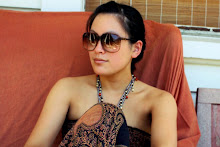From Tate Modern:
Sunflower Seeds is made up of millions of small works, each apparently identical, but actually unique. However realistic they may seem, these life-sized sunflower seed husks are in fact intricately hand-crafted in porcelain. Each seed has been individually sculpted and painted by specialists working in small-scale workshops in the Chinese city of Jingdezhen. Far from being industrially produced, they are the effort of hundreds of skilled hands.
Poured into the interior of the Turbine Hall’s vast industrial space, the 100 million seeds form a seemingly infinite landscape. Sunflower Seeds is a sensory and immersive installation, which we can touch, walk on and listen to as the seeds shift under our feet. The casual act of walking on the work’s surface contrasts with the immense effort of production and the precious nature of the material. Porcelain is almost synonymous with China and, to make this work, Ai Weiwei has manipulated traditional methods of crafting what has historically been one of China’s most prized exports. Sunflower Seeds invites us to look more closely at the ‘Made in China’ phenomenon and the geo-politics of cultural and economic exchange today.
From The Guardian:
[Y]ou can trudge over them, walk or skip or dance on these seeds, all of them Made in China. Or scoop up handfuls and let them run through your fingers, in the knowledge that someone, an old lady or a small-town teenager in Jingdezhen, has delicately picked up each one and anointed it with a small brush. Every seed is painted by hand. The town that once made porcelain for the imperial court has been saved from bankruptcy by making sunflower seeds. It is absurd.
The meanings are as multiple and singular as its form. Ai Weiwei has taken the lesson of Duchamp's readymade and Warhol's multiples and turned them into a lesson in Chinese history and western modernisation, and the price individuals in China pay for that. Every unique seed is homogenised into a sifting mass. Most contemporary Chinese art is a product made for western consumption, just as willow-pattern plates or porcelain vases were shipped out in huge quantities for the western market.





0 comments
Post a Comment